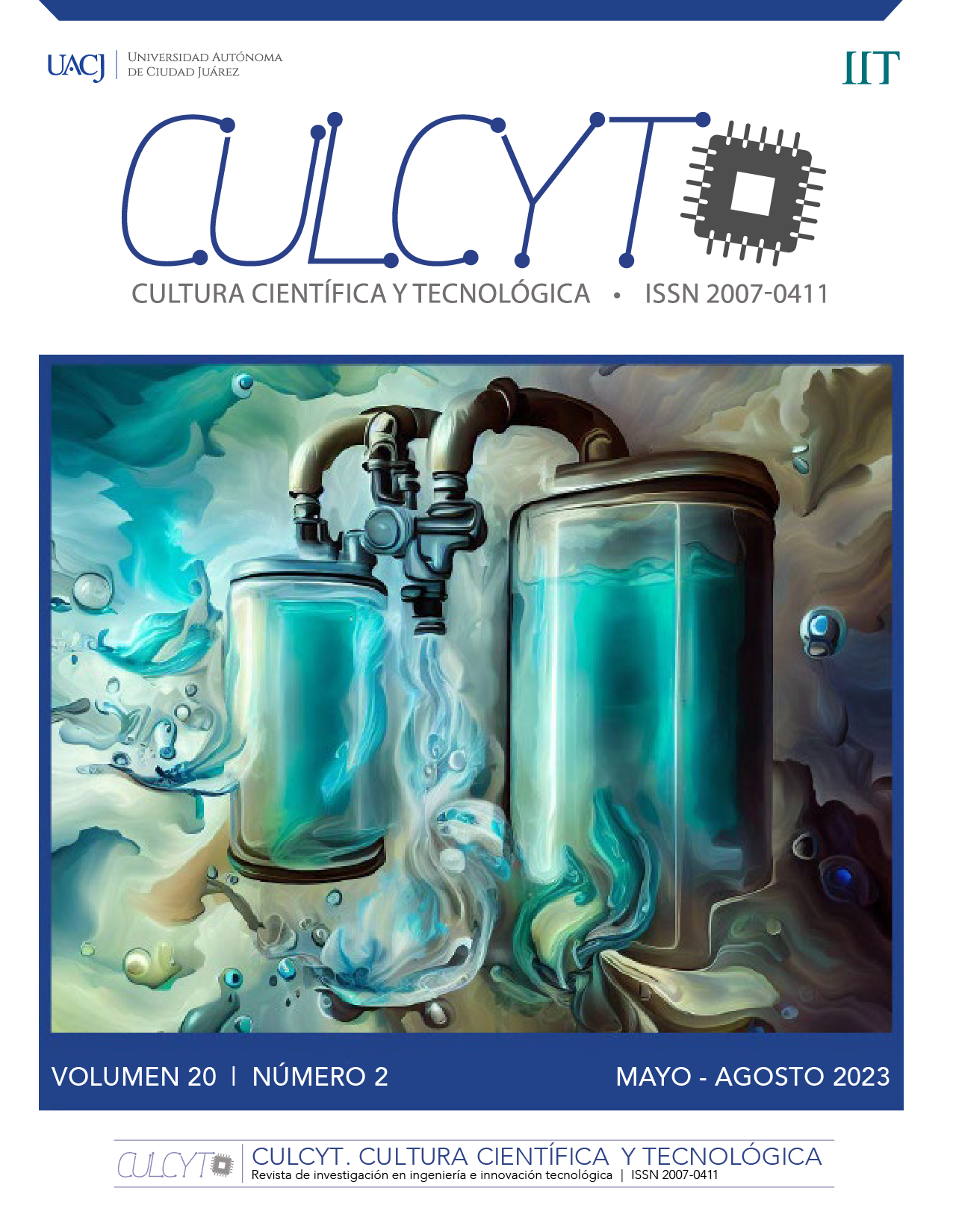Inventory Control by ABC Method for a Transport Company: Systemic Analysis by Families
DOI:
https://doi.org/10.20983/culcyt.2023.2.2e.4Keywords:
control de inventario, método ABC, análisis sistémicoAbstract
The objective of this research is to improve the "inventory control" process by applying the ABC method and based on a systemic analysis by families. A quantitative and qualitative descriptive, non-experimental and transversal descriptive approach was used, considering the current process for the inventory review, identifying the degree of reliability of the information and applying surveys to all the warehouse collaborators. As a result, a classification proposal was obtained according to the operation model. The limitation for the realization of the investigation was the time since it was developed during a period of 4 months, nevertheless it had favorable implications not only for the company in question but for the scientific contribution since it will allow the companies its application, this proposal has been original since it was carried out to a company with the turn of auto transport of load, the joint value of real aspects in an economic context, allowed as conclusion to establish the strategies of marketing to the control of inventories and to present the processes that allow to strengthen its processes for the control of the same ones.
Downloads
References
M. I. Duque, J. A. Osorio y D. M. Agudelo, “Los inventarios en las empresas manufactureras, su tratamiento y su valoración”, RevConta, no. 56, pp. 61-79, 2010, doi: 10.17533/udea.rc.14693.
D. A. R. Nirmala, V, Kannan, M. Thanalakshmi, S. J. P. Gnanaraj y M. Appadurai, “Inventory management and control system using ABC and VED”, materialstoday: PROCEEDINGS, vol. 60, parte 2, pp. 922-925, 2022, doi: 10.1016/j.matpr.2021.10.315.
E. Theodorou, E. Spiliotis y V. Assimolapou-los, “Optimizing inventory control through a data-driven and model-independent framework”, EURO J. Transp. Logist., vol. 12, p. 100103, 2023, doi: 10.1016/j.ejtl.2022.100103.
A. Contreras, C. A. Zuñiga, J. L. Martínez y D. Sánchez, “Análisis de series de tiempo en el pronóstico de la demanda de almacenamiento de productos perecederos”, Estudios Gerenciales, vol. 32, no. 141, pp. 387-396, 2016, doi: 10.1016/j.estger.2016.11.002.
F. M. Zowid, M. Z. Babai, M. R. Douissa e Y. Ducq, “Multi-criteria inventory ABC classification using Gaussian Mixture Model”, IFAC-PapersOnLine, vol. 53, no. 13, pp. 1925-1930, 2019, doi: 10.1016/j.ifacol.2019.11.484.
D. López-Soto, F. Angel-Bello, S. Yacout y A. Alvarez, “A multi-start algorithm to design a multi-class classifier for a multi-criteria ABC inventory classification problem”, Expert Syst. Appl., vol. 81, pp. 12-21, 2017, doi: 10.1016/j.eswa.2017.02.048.
L. Song y Z. Wu, “An integrated approach for optimizing location-inventory and location-inventory-routing problem for perishable products”, Int. J. Transp. Sci. Technol., vol. 12, no. 1, pp. 148-172, mar. 2023, doi: 10.1016/j.ijtst.2022.02.002.
M. Mehdizadeh, “Integrating ABC analysis and rough set of theory to control the inventories of distributor in the supply chain of auto spare part”, Comput Ind Eng, vol. 139, p. 105673, 2020, doi: 10.1016/j.cie.2019.01.047.
Y. Zhang, F. Chu, F. y A. Che, “Closed-loop Inventory Routing Problem for Perishable Food With Multi-type Returnable Transport Items”, IFAC-PaperOnLine, vol. 55, no. 10, pp. 2828-2833, 2022, doi: 10.1016/j.ifacol.2022.10.159.
R. Hernández, Metodología de la investigación, 6.ª ed. México: McGraw-Hill / Interamericana Editores, 2014.
P. López, Herramientas para la mejora de la calidad. Métodos para la mejora continua y solución de problemas. Madrid: Fundación Confemetal, 2016.
I. Grande y E. Abascal, Fundamentos y técnicas de investigación comercial. Madrid: ESIC Editorial, 2007.
H. G. Huamán, Manual de técnicas de investigación. Conceptos y aplicaciones, 1.ª ed. Lima: IPLADEES, 2005
Publicaciones Vértice, Aprovisionamiento y almacenaje en la venta. España: Editorial Vértice, 2010.
C. A. Castro, M. C. Vélez y J. A. Castro, “Clasificación ABC Multicriterio: Tipos de Criterios y Efectos en la Asignación de Pesos”, ITECKNE, vol. 8, no. 2, pp. 163-170, 2011.
H. Tang, H. Zhang, R. Liu y Y. Du, “Integrating Multi-Index Materials Classification and Inventory Control in Discrete Manufacturing Industry: Using a Hybrid ABC-Chaos Algorithm”, en IEEE Trans. Eng. Manag., vol. 69, no. 4, pp. 1276-1293, ag. 2022, doi: 10.1109/TEM.2020.2971109.
S. Olivos y J. W. Penagos, “Modelo de gestión de inventarios: conteo cíclico por análisis ABC”, Ingeniare, año 8, no. 14, pp. 107-111, 2013, doi: 10.18041/1909-2458/ingeniare.14.617.
P. Berling, L. Johansson y J. Marklund, “Controlling inventories in omni/multi-channel distribution systems with variable customer order-sizes”, Omega, vol. 114, 2023, p. 102745, doi: 10.1016/j.omega.2022.102745.
A. Singh, S. K. Rasania y K. Barua, “Inventory control: Its principles and application”, IJCH, vol. 34, no. 1, 2022, doi: 10.47203/IJCH.2022.v34i01.004.
L. Grasso, Encuestas: elementos para su diseño y análisis, 1.ª ed. Córdoba: Encuentro Grupo Editor, 2006.
J. López, UF0476: Gestión de inventarios, ed. 5.1. España: Editorial Elearning S.L., 2014.
C. Arenal y M. A. Ladrón, Gestión de Inventarios. Logroño: Editorial Tutor Formación, 2020.
Downloads
Published
How to Cite
Issue
Section
License
Copyright (c) 2023 Dra. Paula Rosalinda Antonio Vidaña, Dra. Rocío Ramos Hernández, Dra. Ivette Pérez Hernández

This work is licensed under a Creative Commons Attribution-NonCommercial 4.0 International License.
Todos los contenidos de CULCYT se distribuyen bajo una licencia de uso y distribución “Creative Commons Reconocimiento-No Comercial 4.0 Internacional” (CC-BY-NC). Puede consultar desde aquí la versión informativa de la licencia.
Los autores/as que soliciten publicar en esta revista, aceptan los términos siguientes: a) los/las autores/as conservarán sus derechos de autor y garantizarán a la revista el derecho de primera publicación de su obra; y b) se permite y recomienda a los/las autores/as agregar enlaces de sus artículos en CULCYT en la página web de su institución o en la personal, debido a que ello puede generar intercambios interesantes y aumentar las citas de su obra publicada.



